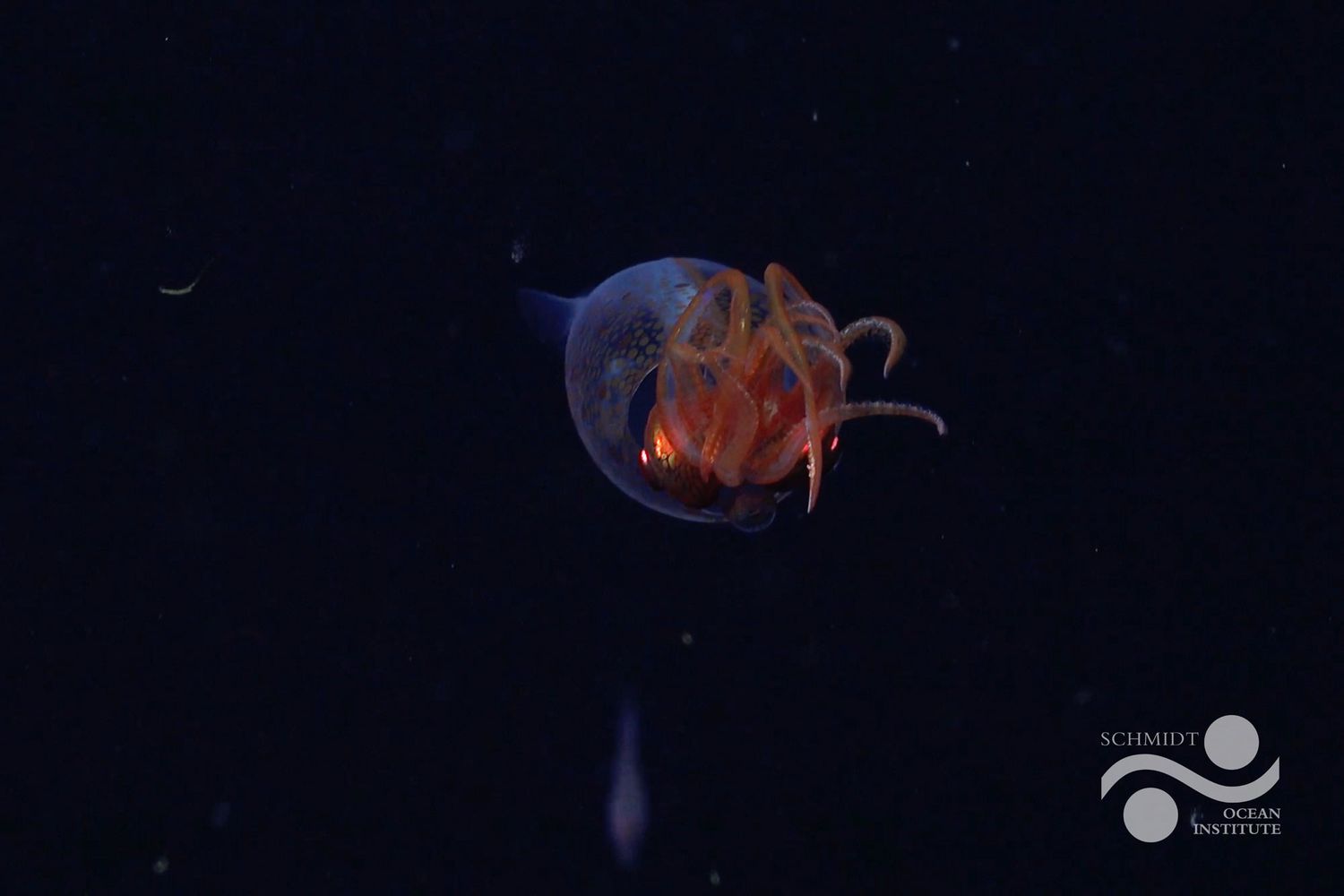Physical Address
304 North Cardinal St.
Dorchester Center, MA 02124
Physical Address
304 North Cardinal St.
Dorchester Center, MA 02124

:max_bytes(150000):strip_icc():format(jpeg)/Colossal-Squid-Spotted-041625-2-9c2989a27b104353b6c4888a143a924f.jpg)
For a century, researchers have only speculated on what a baby colossal octopus looks like – now they finally got a chance to see one up close.
A group of researchers aboard the Schmidt Ocean Institute Research ship Falkor caught a video of the species on the camera in its natural habitat for the first time since it was discovered 100 years ago, according to one press release from non -profit research organization.
“These unforgettable moments continue to remind us that the sea is full of mysteries that have not yet been resolved,” said Schmidt Ocean Institute’s CEO, Dr. Jyotika Virmani, in the publication.
The video was captured on March 9, about 2,000 feet under the sea surface near the South Sandwich Islands in the South Atlantic, during an “expedition searching for new marine life”, according to Schmidt Ocean Institute. Ideel noted that fishermen had previously filmed the dying adult colossal octopus near the sea surface, but the species had “never seen alive in depth.”
Michelle Taylor, the expedition’s main researcher, shared at a press conference, per Scientific Americanthat the crew decided to film the creature “because it was beautiful and unusual” before continuing his exploration lower in the depths of the sea and noted that they did not realize the importance of vision until several days later.
“It’s exciting to see the first one on site Film of a youth colossal and humble to believe that they have no idea that people exist, “said Auckland University of Technology’s Dr. Kat Bolstad, one of the independent scientific experts consulted to verify the images, per release.” For 100 years, we have mainly encountered those like Prey remains in Whale and Seabird Mage and Predators of Harv.
Never miss a story – register for People’s free daily newsletters Keeping up to date on the best of what people have to offer, from juicy celebrity news to compelling stories of human interest.
The researchers noted that the colossal octopus, which measured almost one foot in length, was probably a “youth” or baby. An adult of the species is expected to grow up to 23 feet or 7 meters long and can weigh up to 1100 kg, according to the Schmidt Ocean Institute, making it the heaviest invertebrate animals on the planet.
“This is one of the real giants of the planet living in one of our most untouched marine ecosystems,” Bolstad said, according to Scientific American. “It’s a source of fascination and wonders and plays a huge role in Antarctic food courses.”
Baby Colossal Squid also had a “transparent appearance”, which Schmidt Ocean Institute noted disappears as the creature ages. Among the species “” distinctive properties “is” the presence of hooks in the middle of their eight arms “, which is unique from other glass octopus species.
“Getting pictures of a youth is so wonderful,” says Expert Dr. Aaron Evans, who helped identify the species, at a press conference discussing the images, Per Scientific American. “So for us to see this type of medium size, between a hatching and an adult, is really exciting because it gives us the opportunity to fill in some of the missing puzzle pieces to the history of life for this very mysterious and enigmatic animals.”
Schmidt sea
In January, a Schmidt Ocean Institute’s expedition in Bellingshausen Sea filmed a glacial glass octopus. The pictures, taken more than 2,200 meters below the water, showed the creature placed “their arms loosely over the head”, similar to other creatures of the same species.
“The first observation of two different octopus on back-to-back expeditions is remarkable and shows how little we have seen of the magnificent residents of the southern sea,” Virmani said in a press release. “Fortunately, we captured sufficiently high -resolution images of these creatures to allow the global experts, who were not on the ship, to identify both species.”